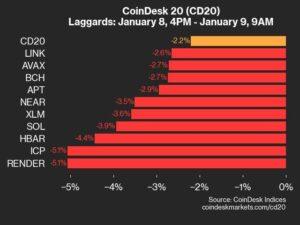Until recently, there was a “green candle galore” in the crypto markets since Trump’s election victory. Bitcoin has momentarily surpassed the all-important $100.00 level, a nearly 500% rally from the crypto winter lows of 2022, and optimism for crypto is even reaching Congress, where talk of a national Bitcoin reserve in the United States is gaining momentum.
If stock market bull runs are marathons, crypto bull runs are frantic sprints. But buyer beware: When crypto rises and FOMO sets in, scammers seize the opportunity, turning the hype into a gold mine for illicit activity.
Without a clear regulatory framework still in place, the risks are amplified. As former President Trump returns to power with a more pro-crypto Congress, regulatory change appears imminent. But what risks do investors face if enforcement measures are not adequately funded?
The 2024 election results could mark a pivotal chapter in crypto history. Can the new Trump administration rise to the challenge of not only unlocking greater innovation in crypto, but also better protecting its users and investors?
Why enforcement and protection should always be a priority
Crypto bull runs are often accompanied by a surge in scams and fraud. In 2023 alone, a period of rising prices, the FBI’s Crypto Fraud Report showed that there were $5.6 billion in reported losses related to crypto scams and fraud. A staggering 70% ($3.9 billion) of these losses came from investment scams.
While phishing scams are prevalent in a digital world, the tenfold increase in losses from Bitcoin ATM scams between 2020 and mid-2024 illustrates the problem tangibly. $65 million in the first six months of 2024 was stolen through Bitcoin ATMs, with an average loss of around $10,000 according to the Federal Trade Commission. Collectively, these numbers show the financial damage and reveal the gaps that need to be closed to protect consumers and deter bad actors – especially if crypto is to continue to gain traction and popularity.
The UK has shown how government policy can adapt to directly respond to the rise in crypto-related crime. In 2024, legislative updates were made to allow law enforcement to more effectively investigate, seize, and recover illicit crypto assets. Key measures include authorizing asset seizures without prior arrest, confiscating investigation-related items such as passwords, transferring assets to wallets controlled by law enforcement, destroying certain crypto assets such as privacy coins when necessary and allowing victims to recover their funds.
The challenge is to find a balance between the measures implemented in the UK, while ensuring the privacy and sovereignty of crypto users.
To maintain its reputation as a global leader in financial regulation, the United States must establish frameworks that foster innovation while protecting market participants from bad actors, and refocus its efforts on investigating criminal activity.
At the heart of the problem lies regulatory ambiguity, which has plagued the crypto industry for years. In 2024, despite the approval of spot Bitcoin and Ethereum ETFs, enforcement action against major crypto institutions has intensified, which critics cite as a contradictory approach to surveillance. This uncertainty stifles innovation and leaves businesses struggling to navigate an inconsistent regulatory landscape.
For the new Trump administration, there is an obvious starting point for addressing high-level compliance issues: creating a clear division of responsibilities between agencies such as the Securities and Exchange Commission (SEC) and the Commodities Futures Trading Commission (CFTC). ) in order to eliminate regulatory overlap. or opaque rules. But this only partially solves the larger problem.
Investor Protection Protects Crypto’s Growth Potential
Compliance frameworks are only as strong as those who investigate and enforce them. Effective compliance requires investment, not only from individual businesses, but also from law enforcement agencies. If no one is there to enforce the rules, bad actors have little to fear. Historically, regulatory agencies lacked the specialized resources needed to oversee the rapidly evolving landscape of digital assets, particularly at the state level. The Trump Administration now has an opportunity to prioritize investments in specialized enforcement capabilities, equipping agencies with the tools, talent and technology needed to stay ahead of sophisticated bad actors .
For example, this could involve creating deeper channels for law enforcement collaboration and facilitating public-private partnerships to monitor and prevent illegal activity in digital assets. It could also significantly reduce the strict enforcement approach currently applied to the crypto sector.
By allocating funds to train staff and develop resources tailored to digital assets, agencies can better track, investigate and prosecute illicit activities. Additionally, public and private investments in blockchain analytics tools could enable more efficient transaction tracking, deter bad actors, and facilitate asset recovery in the event of fraud.
This strengthened enforcement strategy would not only protect consumers, but also strengthen the legitimacy and reputation of the U.S. digital asset market on the global stage.
What will crypto look like under a pro-crypto president and Congress? For me, the future is exceptionally bright. However, the path forward will require active dialogue, strategic investments and a commitment to collaboration between industry leaders and regulators. This moment has the potential to redefine the digital asset landscape in the United States, setting a high standard for the world.




